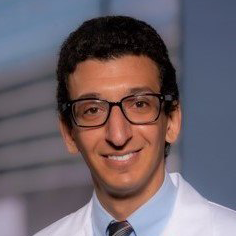Cardiology Training Around the Globe

There are different pathways to becoming a certified cardiologist globally. Every country has a unique system of preparing medical school graduates for independent practice. I had the opportunity to train in two completely different systems (Egypt and the U.S.). Understandably, the structure of training, work hours and culture were completely different. To better understand these disparities, I asked cardiologists all over the world about their training structure and found one of the common themes was the significant variability in the required internal medicine training timeframe.
In this blog, I explore the advantages and limitations of a shorter duration of internal medicine training on cardiology fellows.
| Country | Internal medicine (years) | Cardiology (years) |
| Australia | 2-3 | 3 |
| Brazil | 2 | 2-4 |
| Bulgaria | 1-2 | 4-5 |
| Canada | 3 | 3 |
| Egypt | 0 | 3-5 |
| France | 1 | 3 |
| Germany | 3 | 3-4 |
| Hungary | 0 | 5 |
| India | 3 | 2 |
| Iran | 1 3 |
3 3 |
| Italy | 0 | 4 |
| Jordan | 4 | 3 |
| Lebanon | 2-3 | 3 |
| Morocco | 0 | 4 |
| Philippines | 3 | 3 |
| Sweden | 5 0 |
2.5 5 |
| Serbia | 5 | 1 |
| Saudi Arabia | 4 | 3 |
| Spain | 1 | 4 |
| Turkey | 0 | 4 |
| United Kingdom | 3 | 3 |
| United States of America | 3 | 3 |
Interestingly, Egypt, France, Hungary, Iran, Italy, Morocco, Sweden, Spain and Turkey require up to one year of internal medicine training. So, let us delve into the advantages of shorter internal medicine training:
- Time Efficient
Arguably the greatest advantage of shortening the internal medicine training program is to save time. The average age of medical school graduates in the U.S. is 27-29 years, with an average training duration of 6-8 years. The average U.S. cardiologist will be able to practice independently in their mid to late 30s, compared to other regions with a shorter training pathway. - Earlier Cardiology Specialization
Based on the country, internal medicine residency can range from 20-80% of the total time spent in training. Shifting the ratio towards more cardiology training may facilitate more specialized cardiovascular experience, including exposure to advanced cardiac imaging, procedural experience in electrophysiology, pacing and complex intervention such as structural/valvular intervention while having build a solid foundation in internal medicine. - Job Security
From the beginning of my internal medicine residency, my biggest concern was securing a coveted cardiology fellowship spot. This adds another layer of stress that we probably could do without. Integrating shorter internal medicine and cardiology training into a single match system will give much needed peace of mind to focus on education, career planning and academia. - Indirect Learning
Based on personal experience, managing complex patients during your cardiology training requires you to recall your internal medicine training. You will be surprised by how much internal medicine you have absorbed over time based on a variety of clinical experiences that you add to your armamentarium. Ultimately, you derive significant internal medicine exposure by osmosis and through routine clinical care within the cardiology training environment.
On the other hand, more extended internal medicine training has its advantages:
- More Exposure
One of the biggest advantages of internal medicine training is giving you a flavor of the wide variety of medical specialties. Although many students may have decided their chosen specialty prior to residency, some seek further experience to inform their decision making. A shorter duration of medicine training might limit the relevant experience, particularly for those who remain undecided. - Comfort Level
Although pure cardiology training models will make you familiar with the basics of internal medicine, dedicated internal medicine training is beneficial when dealing with patients with multiple and sometimes conflicting comorbidities. Moreover, it will ensure you provide a more holistic approach to patient care.
The Final Verdict
I have no doubt that my internal medicine training broadened my perspective and made me look at the bigger picture. However, one year of internal medicine training prior to embarking on a fellowship in cardiology provides a fantastic foundation and basic skillset required as a cardiologist with internal medicine experience to treat common conditions within the cardiovascular population. Additionally, it enables early career clinicians to invest efforts towards advancing a career in cardiology.
